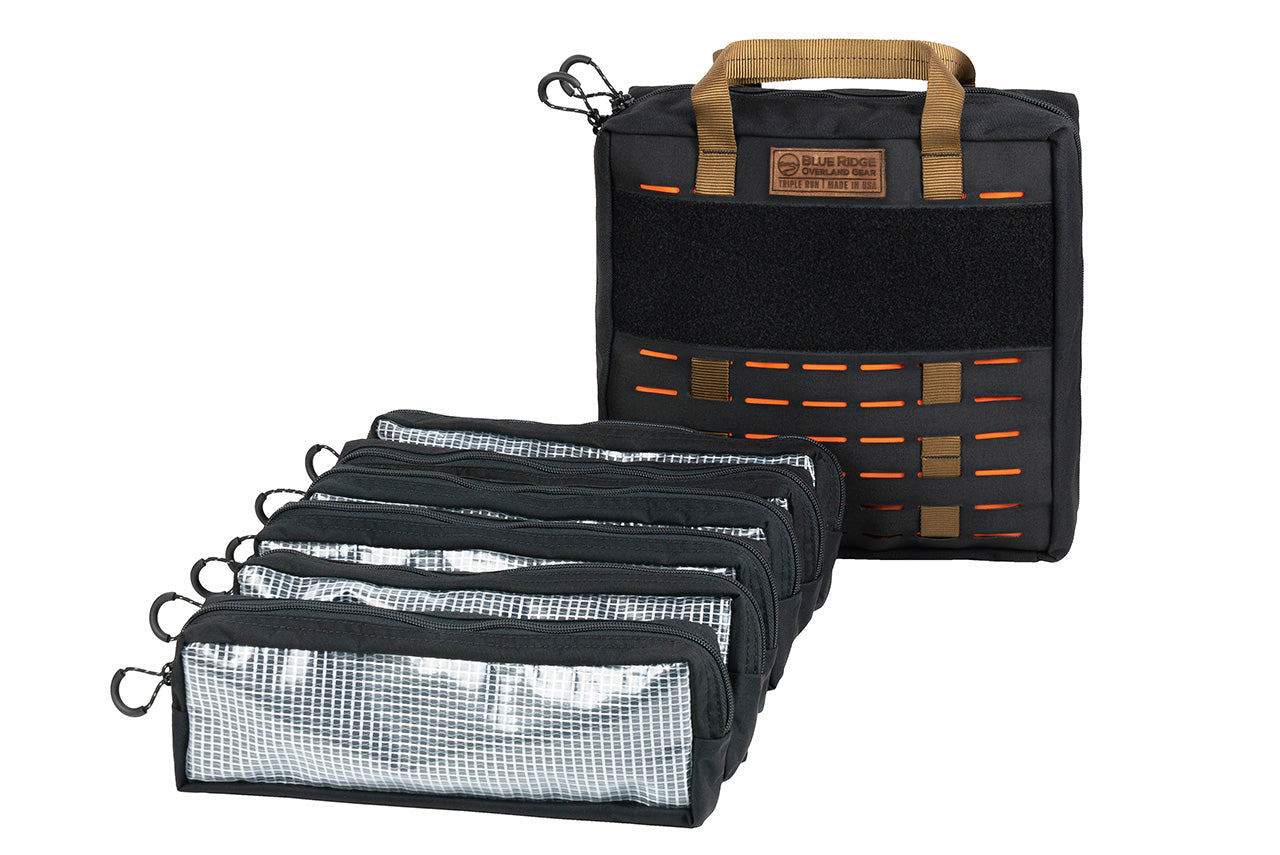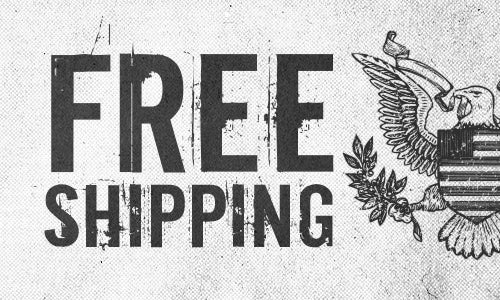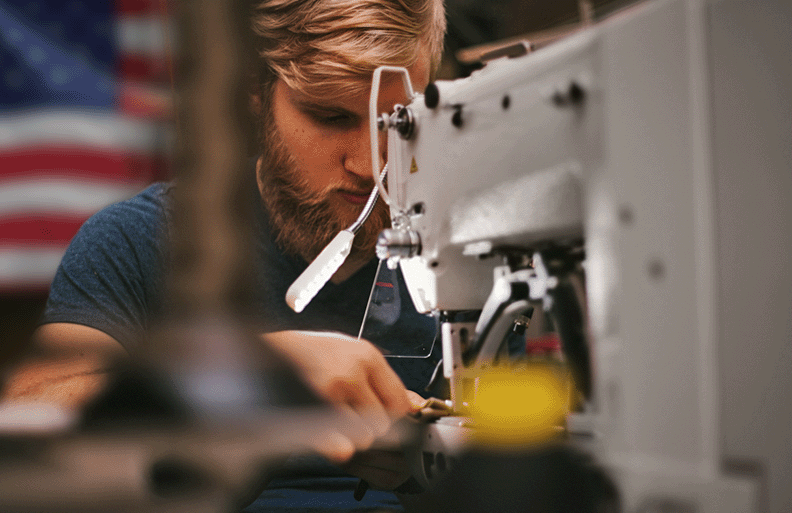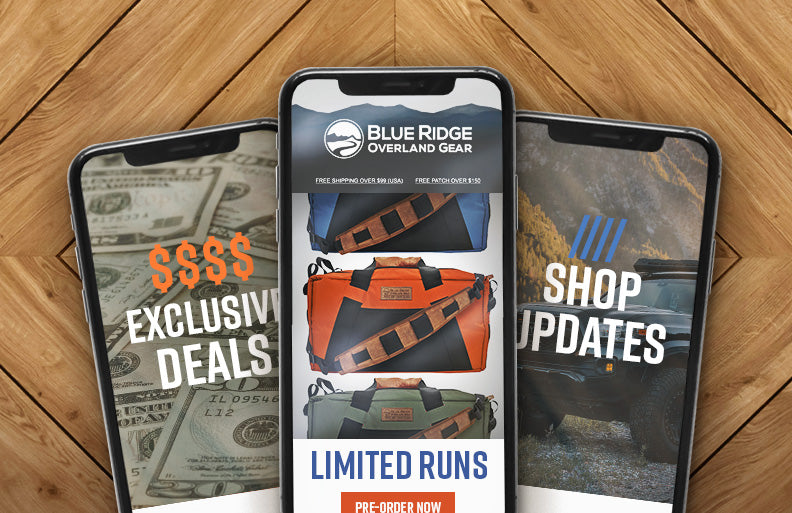Gear In Reach of the Driver | Vehicle Organization: Part 2
What is the best way to kit your vehicle for a low-key excursion? What's essential and what's extra? For a basic excursion, you might need a lot less 'stuff' than you think!
To review, we previously classified the level of excursion into three categories; basic, intermediate, and advanced. Today, we'll focus on the basic excursion. This is your typical two-track gravel road. This type of excursion is a low-stress trip, such as a visit to a state park or campground camping. In a Level I excursion, your vehicle is easily accessible to a towing service if the need arises. This is a trip in which you’ll spend very little time off the grid.
"I think people get really overwhelmed with needing 'stuff' to go places and do things. I don't think that's the case. You can do a lot of things without needing a bunch of stuff," says Matt from Blue Ridge Overland Gear.
In the basic excursion, we like to focus on the immediate, or access point I of your vehicle. These are areas in the vehicle which are within arms' reach of the driver. We've narrowed this category to include some basic items for safety, navigation, first aid, and comfort.
The first place of storage in access point I is your visor panel. This is a great place to keep toll money, a pen, and a small flashlight. If you're out and about in a new place, you never know when you'll need money for tolls or parking.
The console area is another handy place to store essentials; it will accommodate things like your basic first aid items. Keeping these items in a small pouch is a good way to keep them organized and within reach. Some examples would be Tylenol, band-aids, EPI pens, Tums, and HotHandz hand warmer packs. It's also a great place to keep a candy bar in case of low blood sugar.
Another item that should be within easy reach of the driver is a map. While GPS is available on your phone, you may find yourself out of cell range at times and unable to access GPS. Sliding the maps into a protective case and tucking them between the seats is a really helpful way to keep them from getting bent or torn.
The next part of the access point I includes the seatback of your vehicle. The back of the opposite seat is still within easy reach of the driver. We suggest storing items such as monoculars or binoculars, fire extinguishers, bear spray, knives or seatbelt cutters, a first aid kit, and two-way radios on the seatback. Matt puts particular emphasis on the usefulness of road flares. "They have multiple uses and should be in every vehicle," Matt says. Not only will they display an alert if your vehicle is in distress, but they will light a fire quickly in a crisis situation.
So there you have it, all you really need within immediate reach of a basic trip! We hope that this will sharpen your focus and make your next adventure a great one — an organized, great one!"
View More Overland Trip Planning Videos >






